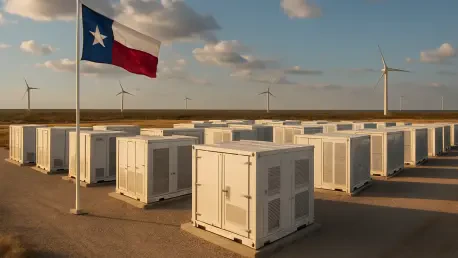As Texas grapples with an unprecedented surge in electricity demand, driven by rapid population growth and the proliferation of energy-intensive data centers, a transformative shift toward renewable energy and advanced storage solutions is taking shape. The state, once synonymous with fossil fuel dominance, now stands at a critical juncture where the integration of wind, solar, and battery storage systems is no longer just an option but a necessity. Energy experts across the board are highlighting how these technologies can stabilize the grid, reduce costs, and ensure reliability, especially after past challenges during extreme weather events. This growing consensus points to a future where clean energy plays a pivotal role in meeting the needs of millions of Texans while addressing economic and social disparities in access to affordable power. The path forward requires not only technological innovation but also strategic policy-making to balance consumption with sustainability.
Harnessing Clean Energy for Grid Stability
The escalating demand for electricity in Texas, fueled by expanding industries and urban centers, has placed immense pressure on the state’s grid, managed by the Electric Reliability Council of Texas (ERCOT). Experts are increasingly confident that renewable sources like wind and solar, paired with battery storage, offer a viable solution to maintain stability, particularly during peak usage periods such as harsh winters or scorching summers. These technologies provide a flexible response to fluctuations in demand, storing excess energy when production is high and releasing it when needed most. Beyond reliability, the economic advantages are striking—clean energy options are often more cost-effective than traditional sources, reducing the financial burden on both utilities and consumers. Importantly, this approach helps mitigate the risk of blackouts, a concern that has haunted the state during past crises. By prioritizing these systems, Texas can build a more resilient infrastructure capable of supporting its dynamic growth while adapting to environmental challenges.
Addressing Affordability and Equity in Energy Access
While the technical benefits of renewables and storage are clear, the conversation around energy in Texas also centers on affordability, especially for vulnerable communities. Data reveals a troubling gap: low-income households often spend a significant portion of their earnings—up to 12%—on electric bills, compared to a mere 1% for wealthier families. This disparity underscores the urgent need for solutions that lower costs through efficient, clean energy systems. Battery storage, combined with solar and wind, can help stabilize prices by reducing reliance on expensive peak-time power. Additionally, tailored demand response programs, particularly for high-usage entities like data centers, could distribute system costs more equitably across users. Experts advocate for policies that ensure these technological advancements translate into tangible relief for all Texans, emphasizing that reliable, affordable power is a universal priority. Reflecting on past efforts, the state has taken significant steps to integrate renewables, setting a foundation for a more inclusive energy landscape that continues to evolve.









